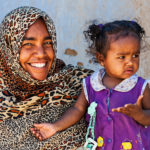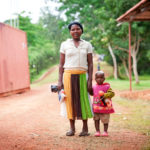Women with young children are doubly challenged by the pandemic. Disproportionately responsible for caregiving, yet faced with the loss of child care options in light of the pandemic and lockdowns, they will face particular difficulties in retaining or gaining work and may face increased stress and pressures within the household. These women are already the…
Child care
Returns to Childcare and Capital: Experimental Evidence from Uganda
Microenterprises are an important source of employment, particularly in low-income countries where they employ more than half of the labor force. While access to finance has often been viewed as a powerful tool for small-scale business development, a growing literature has shown that success is not guaranteed and may depend critically on the entrepreneur’s gender.…
The Impact of Subsidized Access to Nurseries and Employment Services on Mothers’ Labour Market Outcomes and Child Development in Egypt
There are three main explanations for why female labor force participation (FLFP) remains low globally: (1) women’s high opportunity cost of time, (2) weak labor demand, and (3) restrictive gender norms. This project examined all three constraints on FLFP in a low-income context in Egypt. Specifically, the study addressed the following research questions: (i) whether…


